I am a fan of worldschooling. And never really miss a chance to show Eric the highlights and characteristics of the countries we travel to. We started having all sorts of activities to help him discover new things about these countries since he was 3-4 years old. Before that, traveling meant experiencing new cultures, getting to see new animals, interacting with different people, eating local food, placing the countries geographically in a continent and so on. While in Switzerland, it has occurred to me that there is no better way for him to learn about the world and all its wonders than to actually see it and experience first hand what it has to offer. That is how we first started learning about mountains and altitudinal zonation. We created a mountain out of cardboard and glued pictures of the different zones as the altitude increases. Then, we talked about flora and fauna and how different animals and plants live in a certain area and why. And then, we actually went up Mount Titlis in Switzerland to see this altitudinal zonation with our own eyes. We did this when he was 3yo.
As he grew up, I started shifting the direction to more complex information. Traveling was no longer just about food, animals, nature, beach, play and parks. It gradually became more linked to history, to culture, to architecture, etc.
1 month before our 2 week travel to South Korea, I started planning and researching for the amazing facts that would raise Eric’s interest regarding South Korea. It is also important to filter all the information to render it suitable, easy to understand and fun. Luckily my son is a big fan of stories and he is able to focus for more than 1h when we read or tell him new (and even old) stories.
So what I did was to print a A4 sheet with Seoul centre. I researched a little bit and printed small photos of the main sights (partly). Our list included the Gwanghwamun Gate and Gyeongbokgung Palace, the Changdeokgung Palace and the Changgyeonggung Palace, the Doeksugung Palace, the Blue House, the Dongdaemun Design Plaza, Cheonggyecheon- Seoul’s Urban Stream, the Blue House, N Seoul Tower and a picture of the hanok village. As we gradually glued all sights onto our A4 map, I told Eric the meaning of each sight. We first talked about the five palaces in Seoul and how they were used. Gwanghwamun Gate is the main gate that sits at the entrance of the largest palace, Gyeongbokgung Palace. We talked about the changing of the guards that still occurs today at the gate (10 am and 2pm everyday except Tuesdays). Then, we talked about how Changdeokgung was the main residence and how Changgyeonggung was built nearby to host the retiring king. This was a good opportunity to tell him that the main dinasty in Korea was the Joseon dinasty that ruled for many many years. We talked about how Japan attempted to occupy South Korea (an succeeded for a while) and how the palaces were destroyed and the king had no palace to stay. Which is why he turned to a relative of his and turned the Deoksugung Palace into its fifth residence. We briefly mentioned that there is a fifth palace, Gyeonghuigung, where the king fled in case of emergency.
As we glued the Blue House down to our map, I started talikng about modern Seoul, that this is the official residence of the Korean president. Then we talked about modern architecture and the DDP with busy roads and sky scrappers, we talked about how people in a big city unwind as we glued the Cheonggyecheon. Then, I showed him the N Seoul Tower, we looked together for its location on top of a hill and I asked him if it looks familiar (It did, apparently it looks like the tower in Paw Patrol). Eric was very excited and eager to see it in Seoul.
I intentionally left out the Sungnyemun gate for the next day. We located this on the map and glued the photo. I then talked about how old Seoul had 4 main gates followed by 4 smaller ones. Sungnyemun gate is the south gate and it is the most famous building of Joseon Fortress architecture. We discussed how Korean culture looks for proper balance in four directions: water in the north, fire in the south, tree in the east and metals in the west. It was time to tell him a story, how the north gate was kept closed and it was only opened when there was a drought, as people believed it would bring water to the city. Since he was eager to listen more, I started telling him the story of the beginning of the Joseon dinasty and the Ancient Joseon kingdom. This lead us to the story of the first Korean king, Tangun.
The myth of Tangun (Dangun) is particulary interesting for young kids and I definitely recommend telling them this story. Hwanung was the second son of Hwanin, the creator. As his older brother was bound to rule the heavens, Hwanung decided to leave heaven and build a kingdom on Earth. Hwanung is said to have taught people on Earth all kinds of things, how to build, how to grow crops, how to farm, how to raise animals, etc. At some point, a bear and a tiger came to Hwanung to ask that he turns them human. Hwanung agreed to this only if they succeeded to live for 100 days without seeing the sun and eating only mugwort and garlic. The tiger failed. It was only the bear (logically or not, haha) that achieved this. As a result, Hwanung turned the bear into a woman. She had no husband and therefore felt sad everyday that she could not have a child. Hwanung was moved by her prayers and sadness and married her. She then soon had a baby boy, Tangun, who was the first kind of the Ancient Joseon kingdom.
Another thing that we did to prepare for our Korean adventure was to talk about the traditional house, the hanok. As we glued our photo of the Bukchon Hanok Traditional Village onto the map, I showed him photos of a hanok. We did not get into too much details. We talked about how the hanok is built using natural materials found in the environment and how rather than shaping nature to build a house, the hanok was built to not disturb nature. We talked about how the hanok was build to face a river and to have a mountain in the back. We also talked about the hanji, traditional Korean paper made out of mulberry tree bark and how it was used almost on every surface in the hanok. We talked about the location of South Korea on the globe and how winters were harsh and summers were hot. Then we discussed about the ondol and the maru. We discussed about how the inside of the hanok is simple, how it was designed in different L, U, box shapes and how the outside (the garden) was left bare. Eric loved my hypothesis regarding the shape of the roof and why it is tilted upwards. I personally think it is the Chinese influence combined with the need to have larger roofs to keep water away, but at the same time to allow for more sunlight into the hanok. But, Eric liked better the idea that it keeps bad fortune away as it slips on the roof and it is propelled far from the hanok. (If you want to know more, you can read a little bit about the hanok here. I found this to be useful and not too lengthy).
Our final activity included drawing the Korean flag. The white background represents peace and purity (common color in Korean culture). The circle represents the balance of the universe, with the red part standing for positive forces, while the blue part means the negative forces. Then, we talked about the trigrams and their meaning: heaven-spring-east / earth-summer-west / moon-winter-north / sun-autumn-south. I had previously printed out photos of the four seasons, of the sky, earth, moon and sun and we glued them to the corresponding trigram.
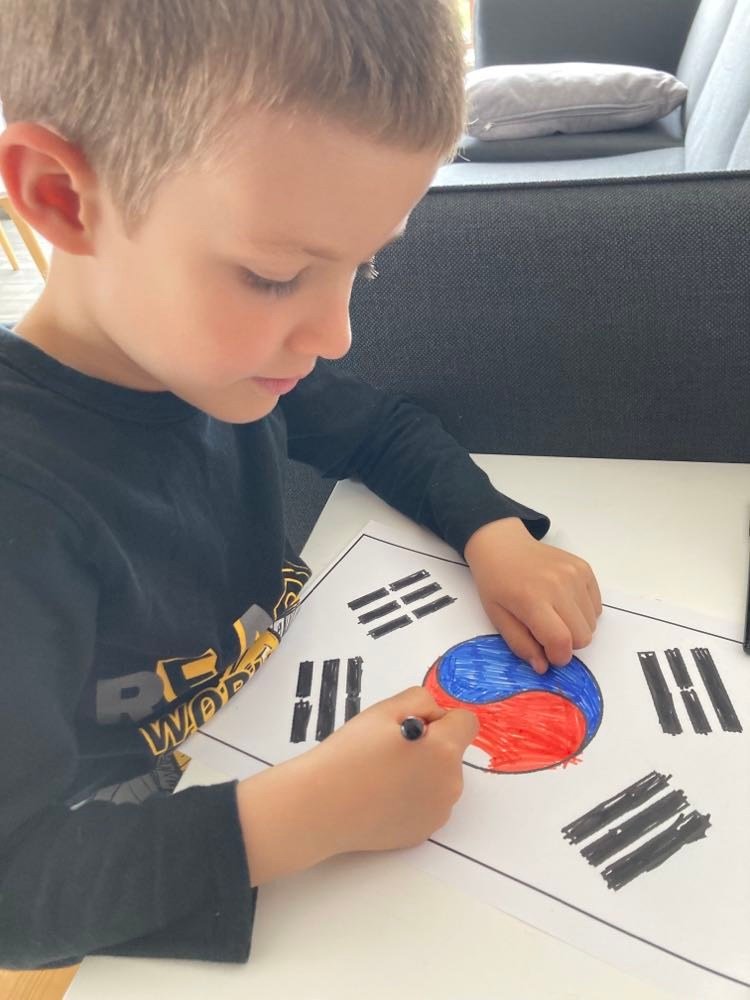
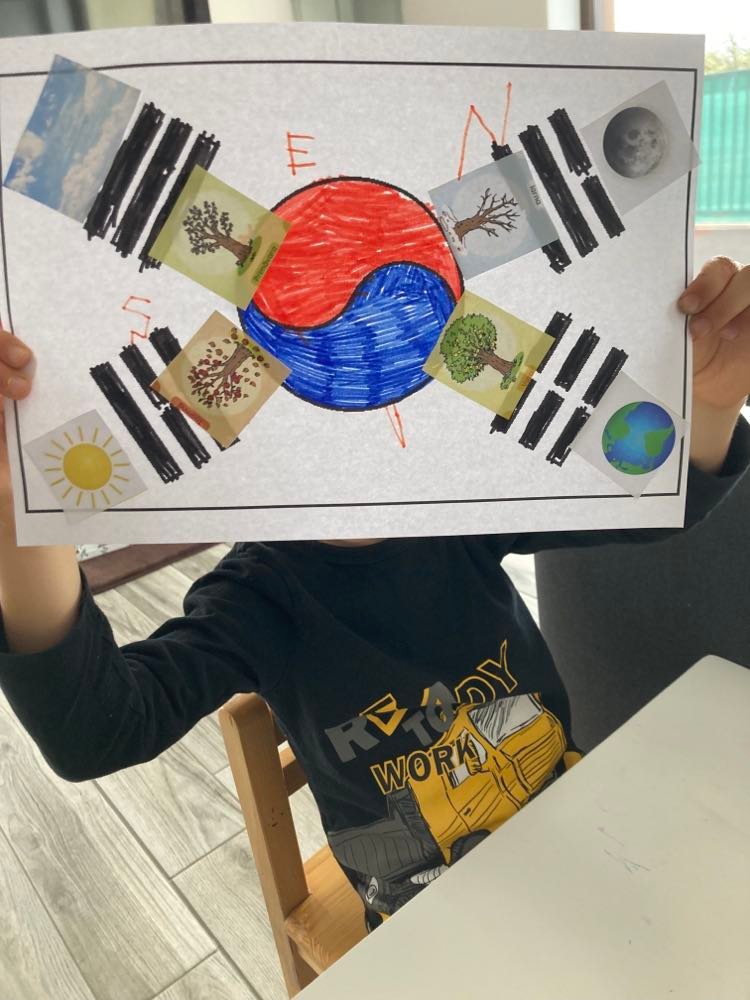
During our Korean adventure, we planned also a 5 days visit in Jeju, a volcanic island, the largest of all of the Korean islands. Our pre-visit activities included the simulation of a terrestrial and an underwater volcano, to better understand the way the island was formed millions of years ago. For the terrestrial volcano, Eric and I mixed apple vinegar with red food colouring in a big jar. Then, we dug a 15cm well in the ground and placed a lot of baking soda inside. Then Eric poured the mixture of red vinegar in the well and we watched the volcano erupt.
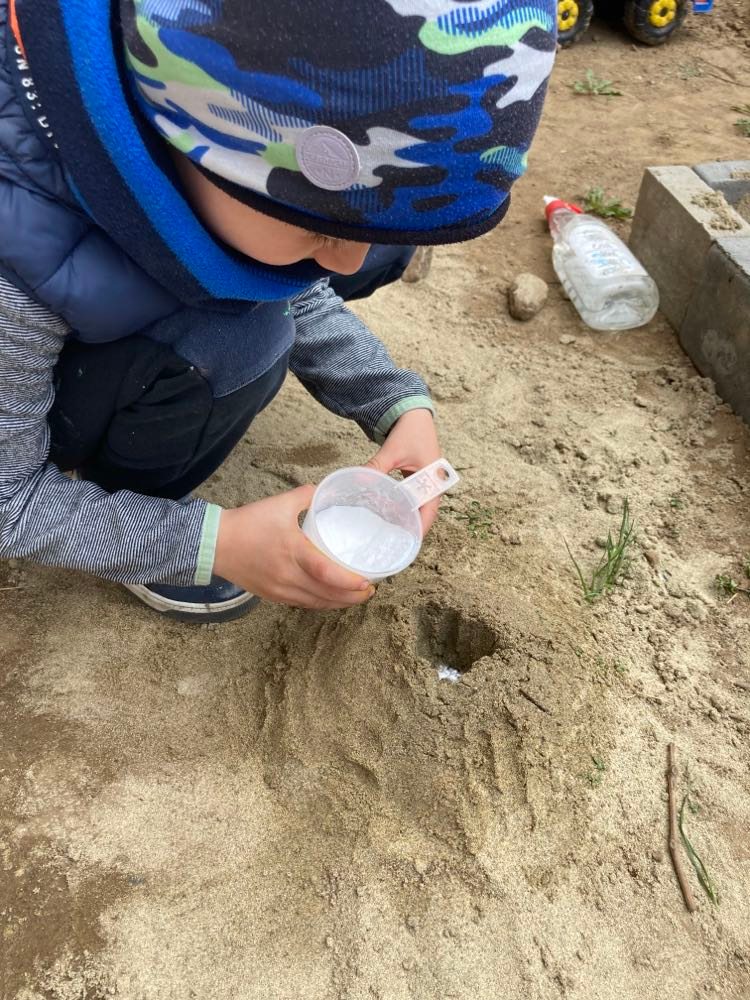
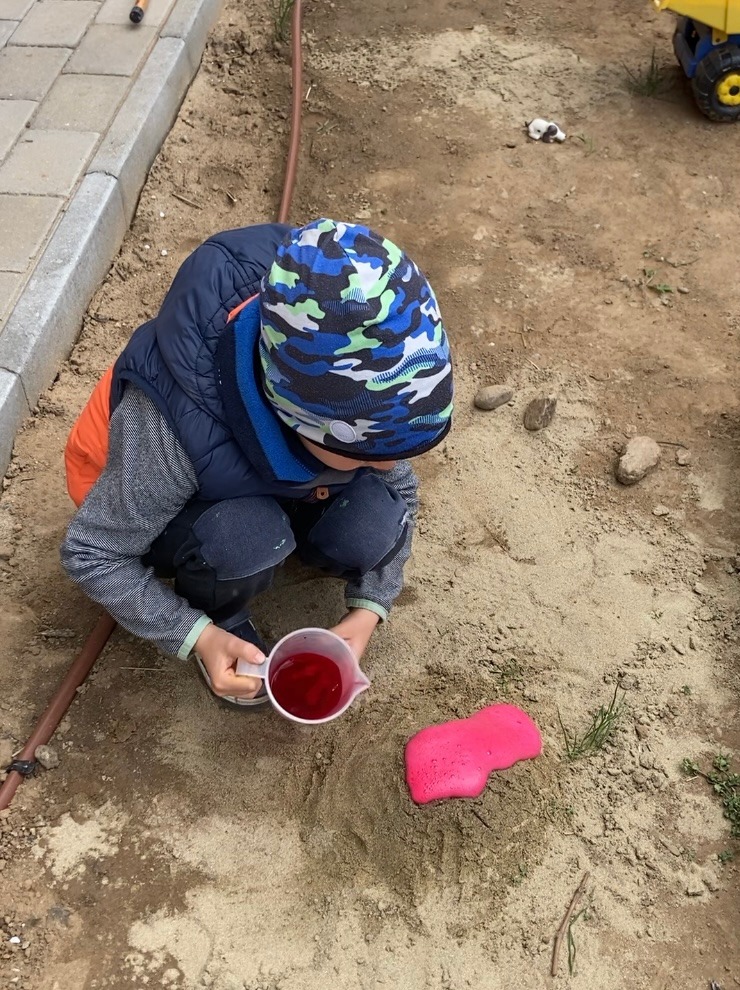
For our underwater volcano, we did a similar experiment. We filled one small jar with hot water mixed with red food colouring and covered the lid with foil. Then Eric made small holes using a toothpick. We then filled two thirds of a larger jar with cold water and placed the hot water jar inside it. The hot red water will emerge through the holes and spread in the cold water jar. Physics can be fun!
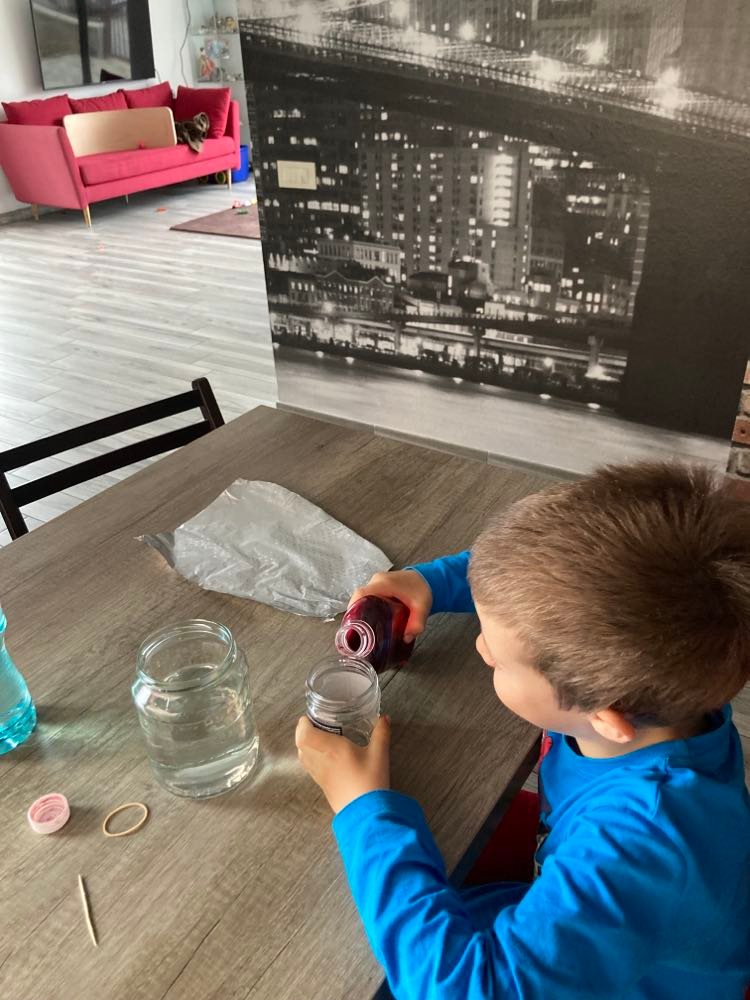
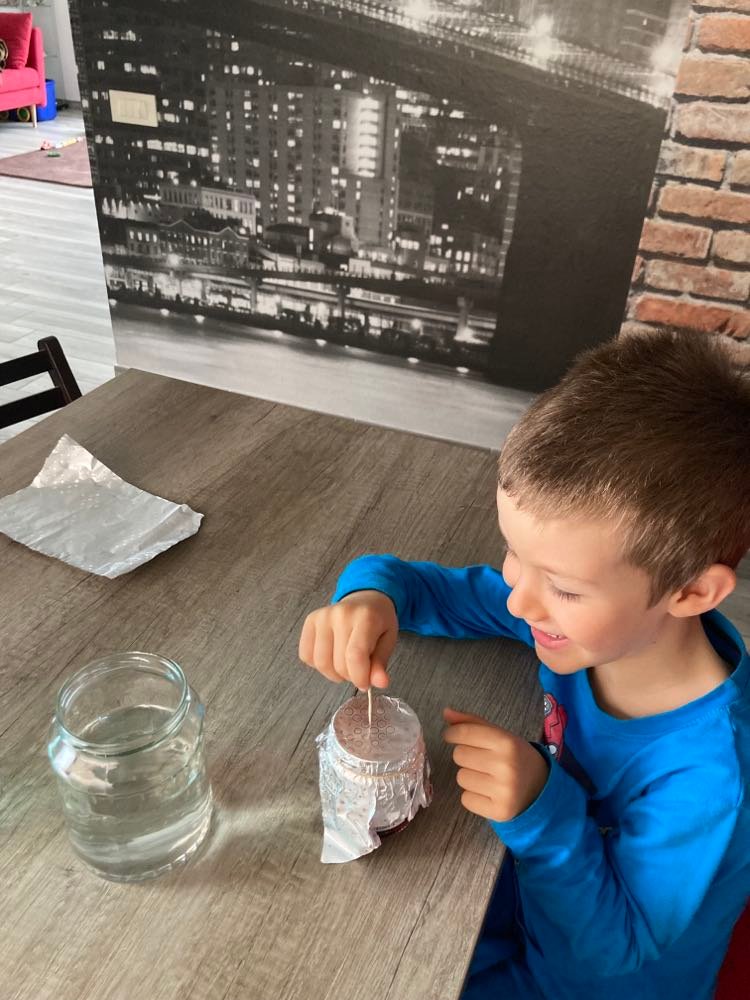
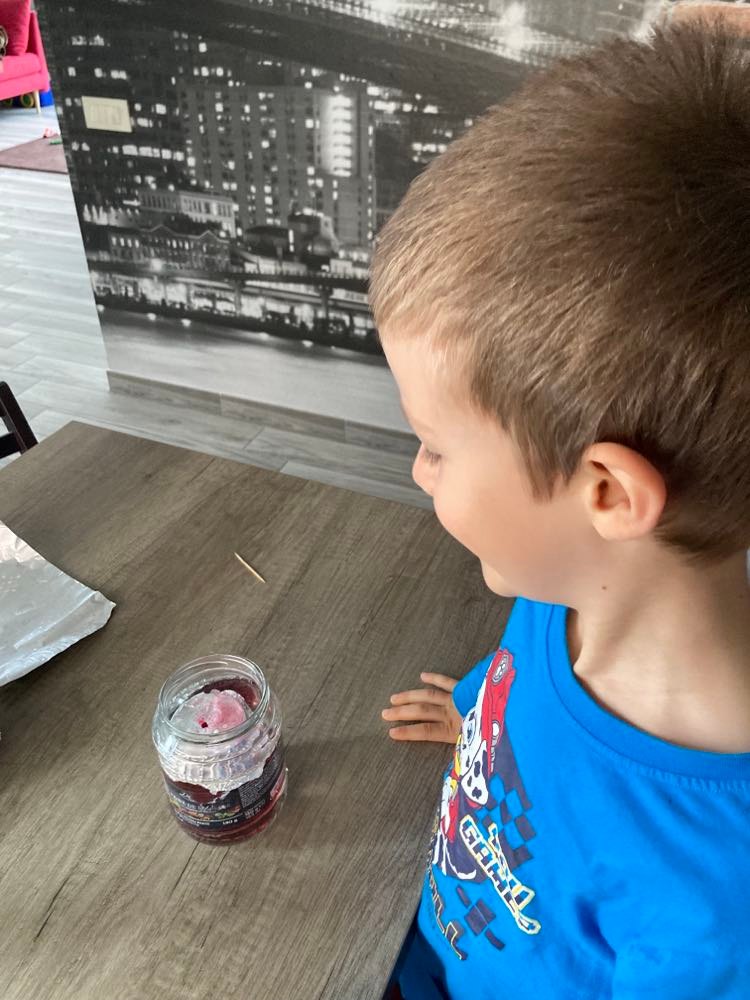
It’s now time to wait for our trip to finally happen. In the meantime, I have prepared a small treasure hunt, with all the major sightseeing spots. It should be a fun way to keep him entertained. Also, we dwell again on the topics we have covered regarding South Korea while actually seeing everything.
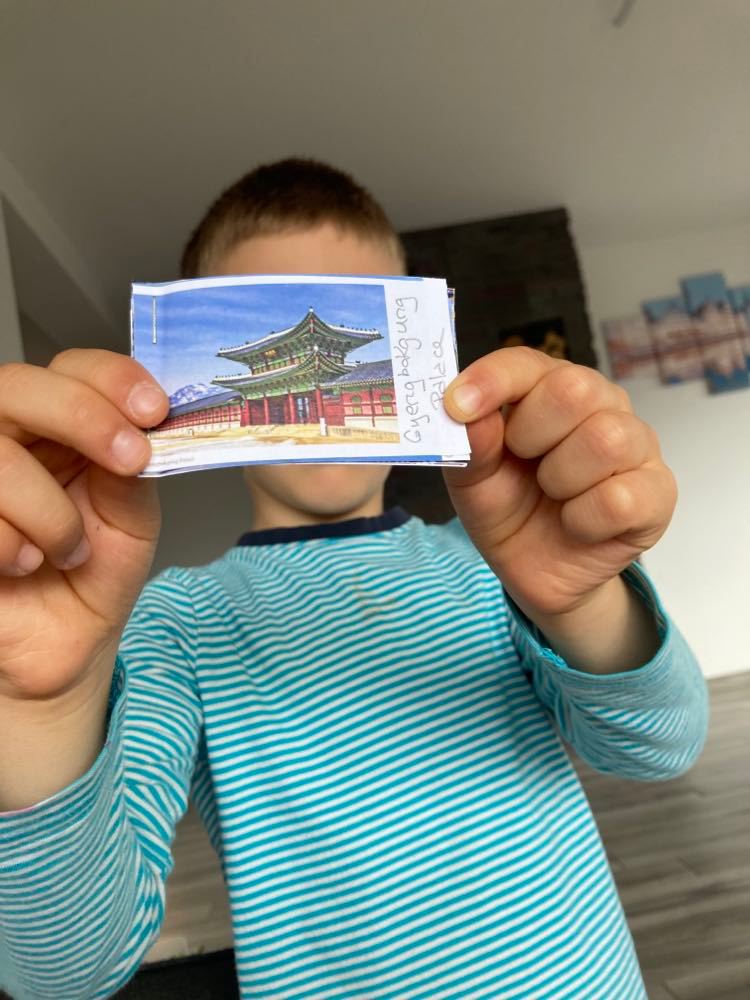
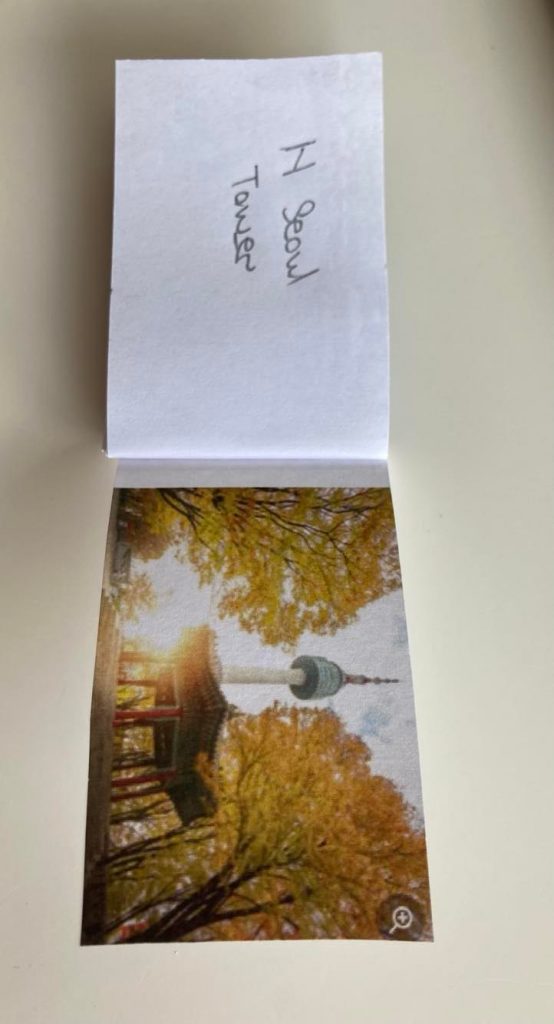
Sometimes, when we return home we do a little fun quiz. This time, we brought back from Korea a wooden DIY traditional Korean house. It was a fun way to tackle again some of the topics we discussed before our travel. You can find these in most souvenir shops with prices ranging from 16000 to 50000 KRW depending on the size and detail degree.
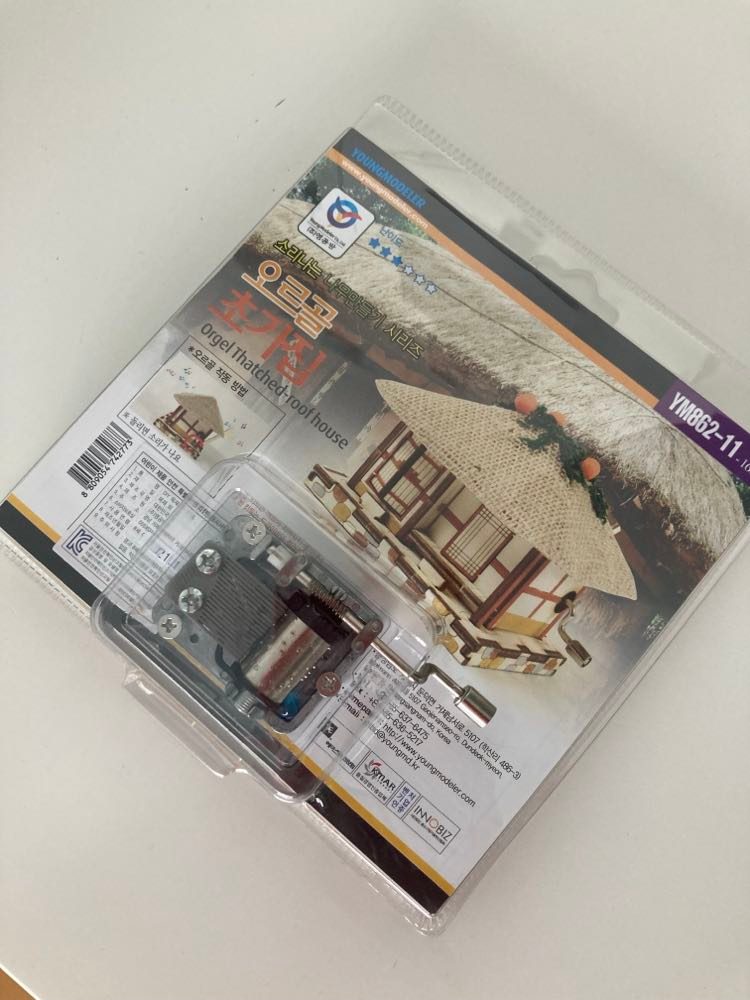
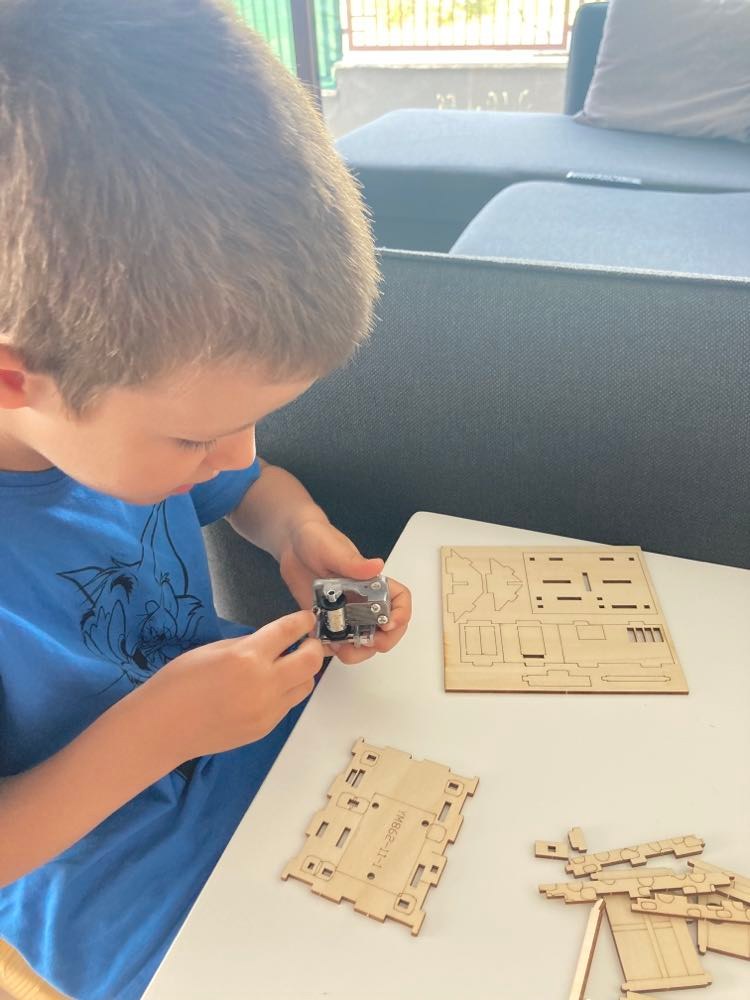
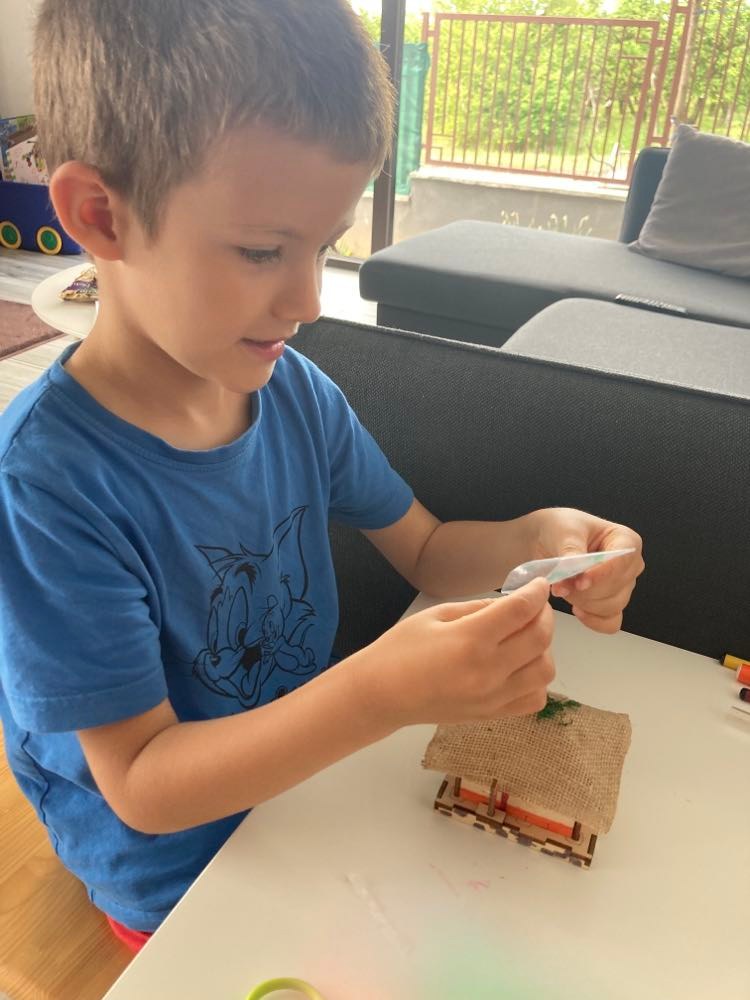
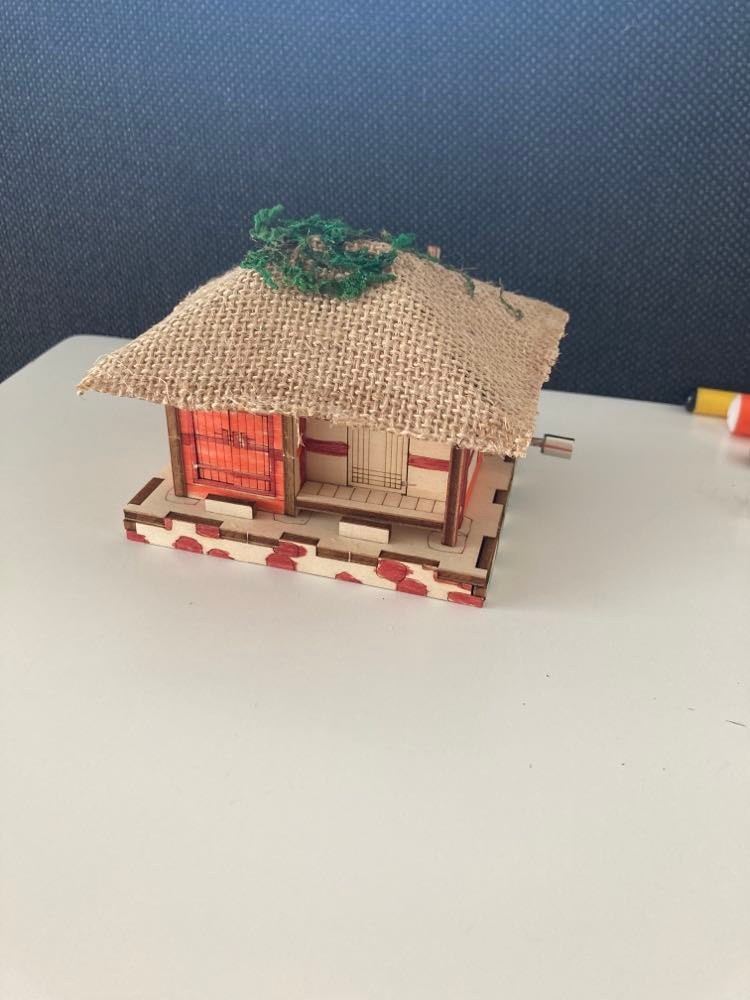

0 Comments